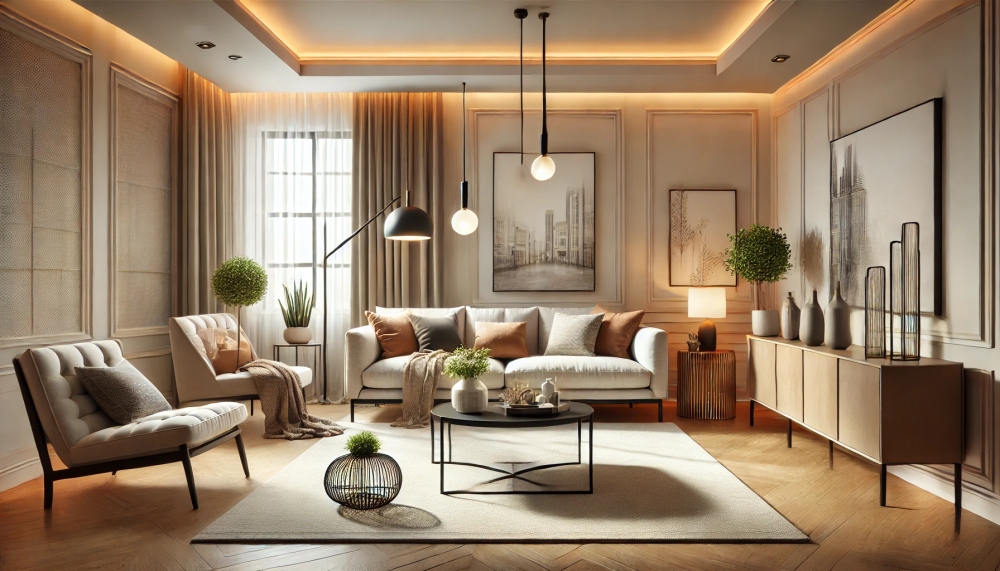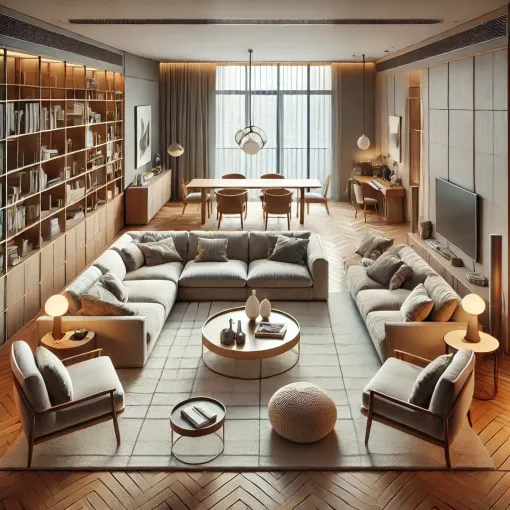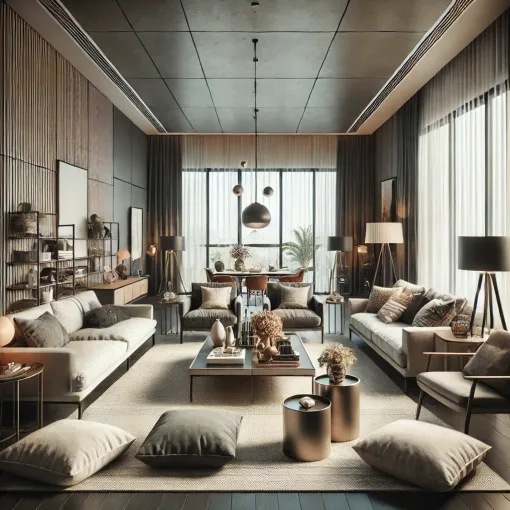Published
- 6 min read
Top 5 Mistakes to Avoid When Designing Your Living Room

Top 5 Mistakes to Avoid When Designing Your Living Room
Designing your living room is an exciting challenge that allows you to express your personality while creating a space for relaxation and socializing. However, it’s easy to make mistakes that can disrupt the flow, functionality, and overall vibe of the room. Here are the top 5 mistakes to avoid when designing your living room and tips on how to fix them.
1. Ignoring the Room’s Functionality
Why It’s a Mistake
One of the biggest mistakes when designing a living room is focusing too much on the look and not enough on how the space will actually be used. Your living room is likely a multi-purpose space, where you entertain, relax, work, or even eat meals. If the layout or furniture doesn’t support your everyday needs, it can lead to frustration, discomfort, and a space that feels disconnected from your lifestyle.
How to Fix It
Start by listing your top priorities: movie nights, family gatherings, or a quiet reading corner? Do you entertain often? If so, arrange seating so guests can interact comfortably. If the room doubles as a workspace, make sure to have adequate lighting and a functional desk setup. Even in a smaller living room, create separate zones for different activities—whether that’s a cozy reading nook or a designated spot for the kids to play. This often comes in the form of rug or furniture placement to highlight the purpose of each zone. Focus on how you’ll use the space and plan accordingly.

2. Overcrowding the Room with Furniture
Why It’s a Mistake
We’ve all been there, trying to fill every corner of the room with furniture to make the space look “complete,” but overcrowding can create a cluttered, chaotic environment. When there’s too much furniture, it can also restrict movement, reduce the feeling of openness, and make the room feel smaller than it actually is. In an attempt to “fill” the space, the overall design can end up feeling more cramped than cozy.
How to Fix It
Choose furniture wisely—focus on pieces that are both functional and proportionate to the size of the room. Consider the layout carefully to leave ample room for easy movement and conversation. When it comes to seating, it’s better to have fewer well-placed pieces rather than trying to squeeze too many into the space. Multi-functional furniture may help reduce the overall amount of furniture in the room by combining two or more pieces into one. Lastly, try arranging larger pieces toward the edges of the room to create open pathways in the center.

3. Choosing the Wrong Scale for Furniture
Why It’s a Mistake
The scale of your furniture is critical to the overall balance and feel of the room. If your furniture is too large for the room, it can overwhelm the space and make it feel cramped. Conversely, using too-small furniture in a large room can create an unbalanced, sparse feel where the furniture looks out of place and fails to anchor the space properly.
How to Fix It
Measure the dimensions of your room before selecting furniture to ensure it fits well. Consider the proportion of each piece relative to the room and other furnishings. For small rooms, choose lightweight, compact furniture with slimmer profiles that won’t dominate the space. In larger rooms, opt for substantial pieces, such as oversized sofas or armchairs, that can help define the space and create a sense of cohesion. A great tip is to lay out painter’s tap on the floor to visualize how much space each piece of furniture is going to take up being committing to that piece. It will help in determining if the scale of the furniture works before you spend the effort of acquiring it.

4. Neglecting the Importance of Lighting
Why It’s a Mistake
Lighting plays a pivotal role in the overall atmosphere of your living room. Relying solely on one type of lighting—say, a single overhead light—can make the space feel flat, harsh, or uninviting. Poor lighting can also limit the room’s functionality, whether it’s reading, watching TV, or creating a cozy vibe for evenings with guests. Without the right lighting mix, your living room might lack warmth, depth, and mood.
How to Fix It
A successful lighting strategy incorporates three key types of lighting: ambient (general room lighting), task (for specific activities like reading), and accent (to highlight artwork or architectural features). Layering these different types of light creates a balanced, inviting atmosphere. Be mindful of the brightness and color temperature of your lights—opt for dimmable fixtures so you can adjust them for different activities. Incorporate a combination of ceiling lights, table lamps, floor lamps, and wall sconces to create depth and dimension. Choose warm-toned bulbs to give the room a cozy, inviting feel, and use dimmable lighting options to adjust the ambiance throughout the day. If you’re not familiar with which light color temperatures go best where, we’ll likely have an article on that very soon.

5. Forgetting to Add Personal Touches
Why It’s a Mistake
A living room that feels too “designed” can come off as sterile or impersonal. When the space is devoid of personal touches, it can lack warmth and fail to make you feel truly “at home.” While it’s important to stick to a cohesive style, your living room should also reflect your personality and tell your story.
How to Fix It
Have a piece that you love but you’re not sure others will agree? Don’t forget it is your living room first! Integrate elements that speak to your tastes and experiences. Display artwork, family photos, or travel mementos that evoke positive memories. A carefully curated mix of items, such as decorative throw pillows, vintage furniture, or quirky sculptures, can make the space feel unique. It’s also a great way to add character and break up any design uniformity. Add a statement piece, like a colorful rug or a distinctive piece of art, that serves as the focal point of the room to really make it your own.

Final Thoughts
Designing your living room is about striking the perfect balance between style, functionality, and personal expression. Avoiding these common mistakes—such as neglecting functionality, overcrowding the space, choosing the wrong scale, ignoring lighting, and leaving out personal touches—will help you create a room that’s both beautiful and practical. By focusing on how you’ll use the space and making thoughtful design decisions, you’ll end up with a living room that truly feels like home.